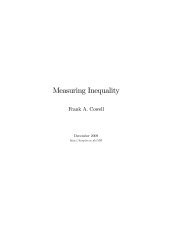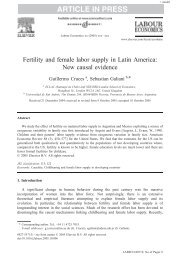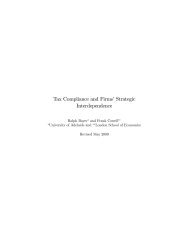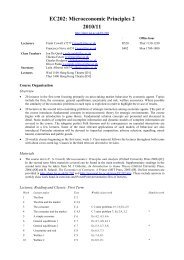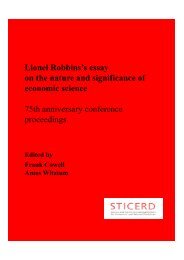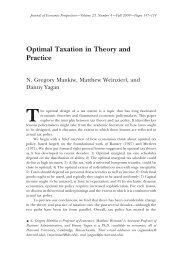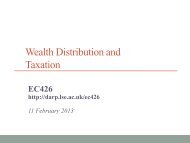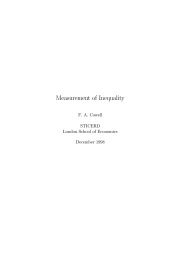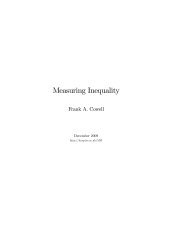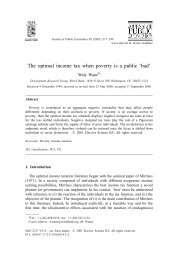Uncertainty and Risk - DARP
Uncertainty and Risk - DARP
Uncertainty and Risk - DARP
You also want an ePaper? Increase the reach of your titles
YUMPU automatically turns print PDFs into web optimized ePapers that Google loves.
Microeconomics CHAPTER 8. UNCERTAINTY AND RISK<br />
Exercise 8.11 An individual taxpayer has an income y that he should report to<br />
the tax authority. Tax is payable at a constant proportionate rate t. The taxpayer<br />
reports x where 0 x y <strong>and</strong> is aware that the tax authority audits some tax<br />
returns. Assume that the probability that the taxpayer’s report is audited is<br />
, that when an audit is carried out the true taxable income becomes public<br />
knowledge <strong>and</strong> that, if x < y, the taxpayer must pay both the underpaid tax <strong>and</strong><br />
a surcharge of s times the underpaid tax.<br />
1. If the taxpayer chooses x < y, show that disposable income c in the two<br />
possible states-of-the-world is given by<br />
c noaudit = y tx;<br />
c audit = [1 t st] y + stx:<br />
2. Assume that the individual chooses x so as to maximise the utility function<br />
[1 ] u (c noaudit ) + u (c audit ) :<br />
where u is increasing <strong>and</strong> strictly concave.<br />
(a) Write down the FOC for an interior maximum.<br />
(b) Show that if 1 s > 0 then the individual will de…nitely underreport<br />
income.<br />
3. If the optimal income report x satis…es 0 < x < y:<br />
(a) Show that if the surcharge is raised then under-reported income will<br />
decrease.<br />
(b) If true income increases will under-reported income increase or decrease?<br />
Outline Answer:<br />
If the individual reports x then he pays tax tx –i.e. he underpays an amount<br />
t [y x]. So<br />
1. If the under-reporting remains undetected then<br />
c noaudit = y tx<br />
<strong>and</strong> if the audit takes place then<br />
2. The individual maximises<br />
= y ty + t [y x]<br />
c audit = y tx [1 + s] t [y x]<br />
= [1 t st] y + stx<br />
Eu(c) = [1 ] u (y tx) + u ([1 t st] y + stx)<br />
Di¤erentiating this we have<br />
@Eu(c)<br />
@x<br />
= t [1 ] u c (y tx) + stu c ([1 t st] y + stx)<br />
where u c () denotes the …rst derivative of u.<br />
cFrank Cowell 2006 128



